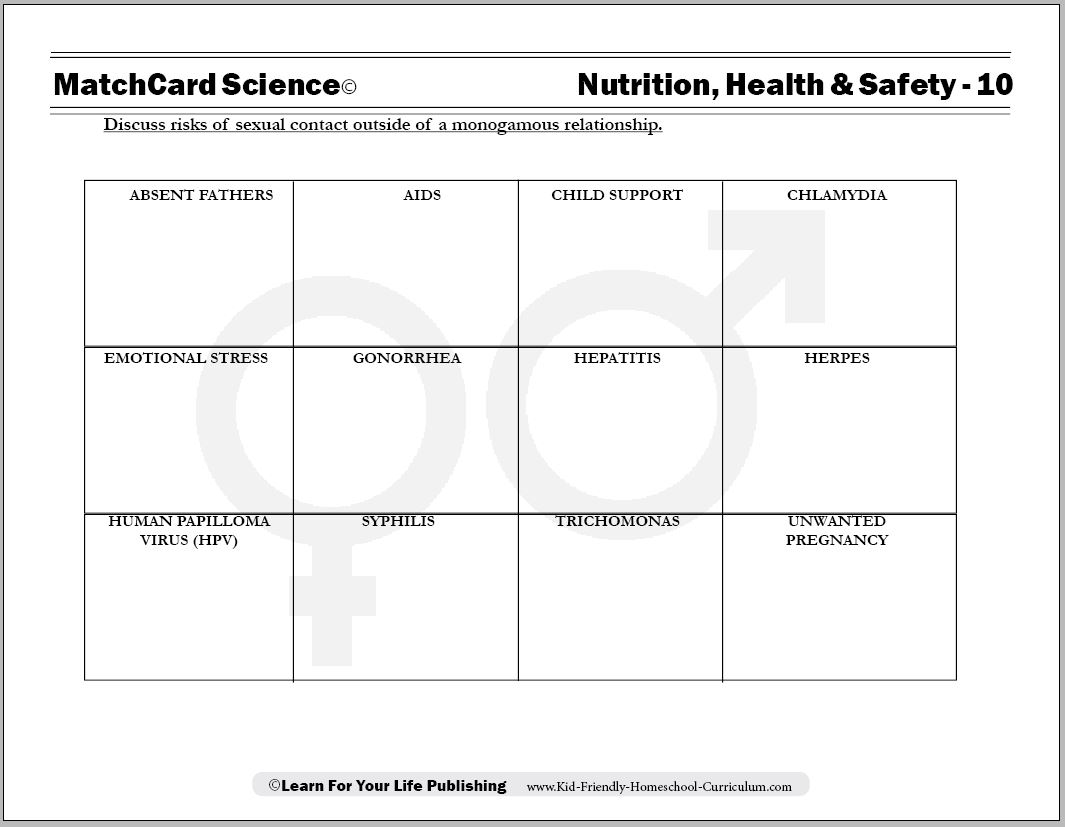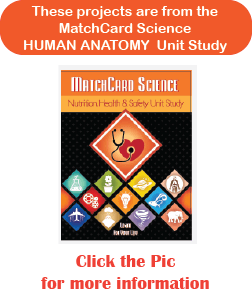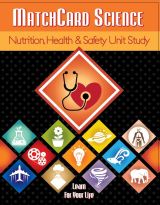Sexuality Risks Worksheet
Students match factual information to the different outcomes of sexual behavior.
Free Download Below


MatchCard Science Sexual Risks Worksheet
Objective: Discuss risks of sexual contact outside of a monogamous relationship.MatchCard: Download below.
MatchCard Information Pieces list information on different outcomes. Students place them in the correct box. Other activities are listed on the Instructor's Page and below.
Print the MatchCard on Risks of Sexual Behavior


Click image to go to download.
This is MatchCard #10 of the Nutrition, Health, and Safety Unit Study.
Find more information on MatchCard Science below.
Risks of Sexual Contact

Why Study Risk Factors?
Sex is an activity that has life-changing consequences. It requires maturity to understand the implications of one's behavior and make mature decisions.While information abounds, misinformation and half-information also circulates. A homeschool teenager enrolled in a local school and was taught that there are only two main types of sexually transmitted diseases: HIV which doesn't really occur in the straight population, and simpler diseases that are easily treated with pills. As the information on the MatchCard explains, even treatable diseases can be permanent, cause infertility, or cause birth defects to one's children in the future. And HIV does occur and is more common if someone is a carrier of other sexually transmitted infections.
Public campaigns have emphasized the value of testing for STD's to protect them, leaving teenagers with the assumption that testing protects against infection. It does not and can not. Testing won't stop an individual from getting an infection. It is intended to limit the number of people that individual passes the infection to.
The MatchCards provide students factual information about the consequences of sexual relationships.
12 Common Risks
The worksheet lists 12 of the most common risks of sexual behavior (in alphabetical order). Those risks include:- Absent Fathers:
Children often are more vulnerable and may feel abandoned and alone
- AIDS:
Incurable, fatal disease due to the HIV virus which prevents the body from fighting infections
- Child Support:
The father will have money taken out of his paycheck for the next 18 – 23 years. This can be a financial hardship on later marriages and children.
- Chlamydia:
A treatable bacteria spread from one partner to another that can cause discharge, pain and infertility. Called a silent infection, many do not know they have chlamydia.
- Emotional Stress:
Feelings of being used by another person and difficulty trusting that person or another
- Gonorrhea:
A treatable disease caused by bacterium. If untreated it causes pain, ectopic pregnancy, infertility, or can spread to the blood and be life threatening.
- Hepatitis:
Infection of the liver classified as Type A, B, C, D, or E. Type B is transmitted sexually or from exposure to blood and causes a lifelong incurable disease of the liver which can be fatal.
- Herpes:
An incurable virus that causes blisters that appear intermittently Babies can die from herpes infections acquired during birth.
- Human Papilloma Virus:
A common virus causing genital warts which are raised, multi-segmented warts on the genitals. Other forms cause cervical cancer in females.
- Syphilis:
A treatable disease caused by bacterium which causes sores called chancres. If not treated it can damage internal organs and cause death or dementia. It increases the chance of stillbirth in pregnancy.
- Trichomonas:
A treatable protozoan parasite that causes discharge and a strong odor. It increases the chance of acquiring HIV or having a premature baby.
- Unwanted Pregnancy:
Increases the odds that the mother and child will live in poverty; increases child abuse, increases the rate of abortion.
Other Learning Activities
How Much Protection is Enough?
100 Pennies & Birth Control

80% of sexually active young women will become pregnant in one year if they do not use birth control. Show how many of the pennies that would be.
Many advise young people to use condoms to prevent pregnancy. When condoms are used, only 15% of sexually active women become pregnant in one year. Move 15 of the pennies away from the rows and to another area. This represents those 15 mothers. Obviously, 15% is much better than 80%.
So if 100 15 year old girls are sexually active and using condoms, 15 will get pregnant in their 15th year. When they are 16, another 15 will get pregnant. Move another 15 pennies over.
Continue counting the years until they are 21. How effective are the condoms? Most will become pregnant before they are half-way through college. Of course, without the condoms, many have three children by the age of 21. Discuss the risks and benefits.
Compare condoms to contraceptive pills. They have a 99% effectiveness if taken correctly, but a 93% effectiveness with typical use (human error makes people forget.) Calculate that risk between now and college for someone your age.
Ordering The Risk Factors

Have the students order the information pieces according to their opinion. Place the items they think would be the worse if it occurred to them at the top, and those that would not be as bad under it.
There is no right or wrong answer, but a method of contemplating the impact some of these might have on their future.
The ABC's of STI's

- VD: Venereal Disease
- STD: Sexually Transmitted Disease
- STI: Sexually Transmitted Infection
- AIDS: acquired immunodeficiency disorder
- HIV: Human Immunodeficiency Virus
- HPV: Human Papilloma Virus
- HSV: Herpes Simplex Virus
- HBV: Hepatits B Virus
An Ounce of Prevention

- Abstinence or Monogamy
- STI testing
- Contraception
Can you find the success rates of these strategies on the CDC (Center for Disease Control) or other websites?
Objection!

Objection to Abstinence
- Doesn't work or isn't realistic
- Is religious
- Threatens the health and safety of teens
Objections to Testing
It is costly to do comprehensive screens for all the different STI's.- Who should pay for this testing?
- How often?
- What portion of the population should receive the testing?
Objections to Contraception
- Non-hormonal contracetions (ie barrier methods) tend to be less effective.
- Hormonal Contraceptions are more effective but have other risk factors
- Rare side effects (effecting one in about eight thousand) include:
- Blood clots possibly leading to heart hearts or strokes - particularly in those who smoke or have high blood pressure
- Certain forms of reproductive cancers (may have protective effect against other forms of cancers)
- Common side effects (effecting about 15%) include
- Weight gain
- Mood swings
- Migraine headaches
- Preventing embryo from embedding (% not known)
- Sometimes instead of preventing conception the hormone may prevent an embryo from embedding in the uterine lining one week after conception.
- Rare side effects (effecting one in about eight thousand) include:
MatchCard Science
How To Use MatchCards

Download the FREE MatchCard Science Instructor's Guide and see how MatchCards can make building their science knowledge base fun.
Nutrition, Health, and Safety Unit Study

See more about the Nutrition, Health, and Safety Unit Study.
12 Science Unit Studies

Chemistry is only one of twelve complete unit studies for kids in 3rd to 8th grade.
Comprehensive objectives, hands-on projects, suggested science fair experiments, and the fun game-like MatchCards keep them interested in learning science. See all twelve MatchCard Science Unit Studies.
About Our Site
Hands-On Learning













